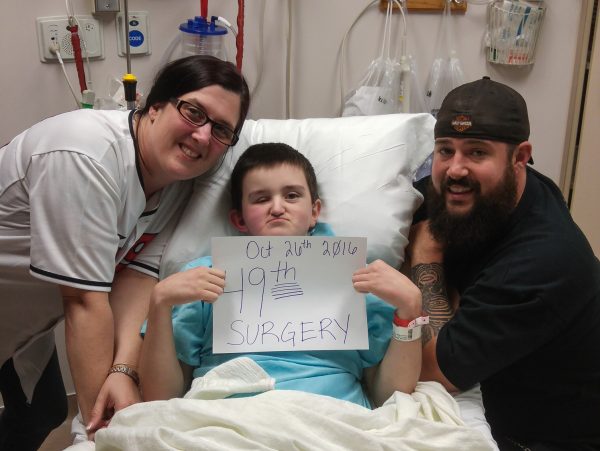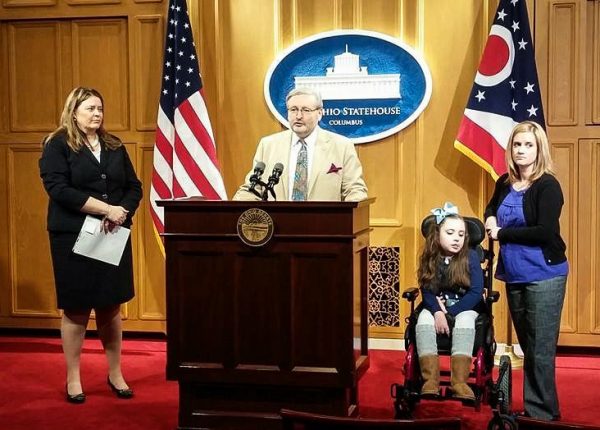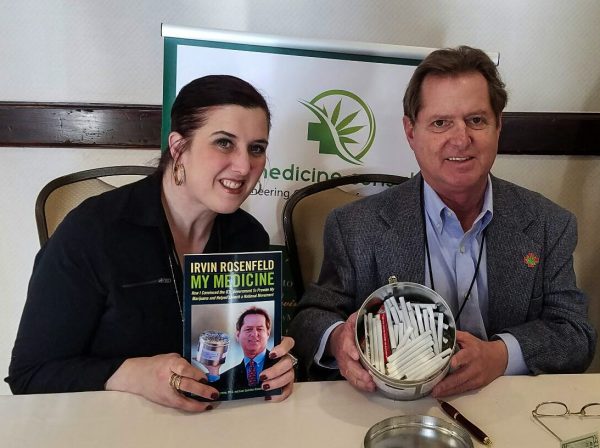(Editor’s Note: This is the first story in a series that will examine medical cannabis and the programs that are under development in both West Virginia and Ohio.)
Dana Kovach was raised in Toronto, Ohio, but moved to St. Clairsville early in high school when her parents decided to divorce. That’s when she “discovered” cannabis, otherwise known as marijuana.
“But I wasn’t researching it; I was just smoking it back then,” the 39-year-old recalled. “I was kind of a hippie kid.”
Following high school, she opted for the United States Navy as her father and her grandfather did because she didn’t believe she was “college material,” and she spent three years in the military until an injury forced her to accept an honorable discharge and return to the Upper Ohio Valley.
That is also when “J.C.” came into her life, Kovach’s son who will turn 18 years old next month. The boy, though, was soon diagnosed with Rhabdomyosarcoma, a childhood cancer that usually starts in the muscles connected to body movement. To date, J.C. is 5 feet tall, blind and legally deaf, but the young man is alive. He has endured 49 surgeries, and is scheduled for a 50th in May 2018.

“He’s my rock star,” Kovach said with a broad smile. “He has battled back. I don’t know where he gets his strength. He’s been in so much pain.”
Because of her son’s suffering, Kovach decided several years ago to become very active in the movement to legalize medical cannabis, and when Issue 3 was placed on the ballot in the state of Ohio, she traveled the Buckeye State to lobby residents to vote in favor of the initiative.
“I was thrilled when Issue 3 was developed in Ohio, but I was mad because they included recreational use in it because I didn’t think the state’s people were ready for that,” Kovach said. “I’m not opposed to that, but at that time I was more concerned about my son’s pain and for the rest of the potential patients. Had they only put medicinal in Issue 3, I bet the state would have recreational by now.
“But it was Issue 3 that convinced me to really get involved with pushing it, and although it was defeated, I’ve not stopped. Now that we have it legal thanks to the lawmakers, my fight involves making sure that the patients in this area have access to it without having to drive for several hours to get their prescriptions filled.”

ISSUE 3
A “Yes” vote would have legalized the sale of marijuana to Ohio residents that was produced by one of 10 grow facilities, and a “No” vote would leave the laws in the Revised Code untouched.
The vote took place on Nov. 3, 2015, and although Kovach believed the initiative had a chance for approval, 63.65 percent of the 3.21 million voters opted to reject the legalization. Most viewed the defeat as a statement against the monopoly that would have been created for the 10 major investors, but Kovach feels the vast majority of voters failed to read Issue 3 from beginning to end.
“It was a monopoly, and we all know it was a monopoly, but what most people failed to understand was that it was to be a monopoly for only the first four years,” Kovach reported. “It was designed like that so the original 10 investors would get a return on their investment, and I believe they deserved that return because after that, it would have opened up to the open market. That was a fact that a lot of people missed.
“Also, there are more than 11 million people who live in the state of Ohio, and out of that number only 7.8 million are registered voters. There were 1.2 million votes cast in favor of Issue 3, and that’s more votes than have ever been cast in favor of a candidate in a gubernatorial race,” she said. “One of the reasons we were crushed when it somehow was defeated was that there are more than 3 million residents who would qualify to use medicinal cannabis to treat their illnesses.”

That figure, of course, included her son, and Kovach believes the legalization of marijuana would have led to a decrease in the number of overdose deaths that stem from the use of opioids. From 2000 to 2015, the overdose death rate in the Buckeye State increased by 642 percent, according to the Ohio Department of Health, and in 2000, 411 deaths connected to opioid usage occurred. In 2015, that number grew to 3,050 deaths.
“One word that I truly hate is the word, ‘junkie,’ and that’s because addiction can happen to anyone in any form. Addiction has no boundaries, and it can involve alcohol, gambling, sex, drugs, and several other things in life,” Kovach insisted. “In the case of opioids, I think we need to remember that the vast majority of people who are addicted to opioids were introduced to them by a doctor for pain relief.
“So, I don’t think it’s fair that we are singling out these people,” she continued. “But people just want to call them ‘junkies,’ and I think that needs to stop. They have a problem, they are in pain, and they can’t get that pain to go away. That’s the root of the issue, and it’s been proven that medicinal cannabis can help bring the numbers of overdose deaths down as well as the overall addiction numbers.”

HOUSE BILL 523
The movement in favor of medical cannabis was initiated in the state of California and was passed by the people in 1996. The state of Hawaii was the first to see legalization legislation approved by lawmakers in 2000.
One year after the defeat of Issue 3 in Ohio, members of the Ohio General Assembly approved a Medical Marijuana Control Program, and at this time the state officials are in the process of reviewing applications. The House vote was 67-29, and the Senate approved by a slim, 18-15 count.
The Ohio Board of Pharmacy will grant 60 dispensary licenses from the hundreds received, and each applicant paid a $5,000 nonrefundable fee for consideration. The chosen 60 dispensary owners will pay $70,000 for a two-year operations license.
“One of the highlights in the bill is that we have whole-plant access, and in the law it mandates that it has to be vaped because they don’t want you smoking it,” Kovach explained. “There is also an indigency scale, and we fought hard for that because without it, the people who could not afford it could not gain access to it. With that in place, though, they will be able to. It will also offer discounts to our veterans.

“There are also protections in the bill for students who have the conditions to use to cannabis because we’re drug testing our kids these days for a lot of different reasons,” she said. “There are also protections for the parents who allows their children to use cannabis to treat their conditions so it’s not a horrible bill.”
Not everything Kovach fought for, though, made it into the language of legislation.
“The bill does leave it up to employers as far as their employees participating,” she said. “That concerns me because it’s OK to use other opioid drugs while you are at work. I do think that’s ridiculous, but that’s also politics.
“Rep. Jack Cera (D-96) had an issue with that, and that’s why he cast a ‘no’ vote on the issue,” she said. “But he called me, and he explained that to me, and that’s why Jack Cera will always get my vote. I respect him for calling me and explaining it to me.”

The medical conditions that qualify for Ohio’s Medical Marijuana Control Program have been determined, but residents also can apply to state officials to add a condition. The illnesses include AIDS, amyotrophic lateral sclerosis, Alzheimer’s disease, cancer, chronic traumatic encephalopathy, Crohn’s disease, epilepsy or another seizure disorder, fibromyalgia, glaucoma, hepatitis C, inflammatory bowel disease, multiple sclerosis, pain that is either chronic and severe or intractable, Parkinson’s disease, positive status for HIV, post-traumatic stress disorder, sickle cell anemia, spinal cord disease or injury, Tourette’s syndrome, traumatic brain injury, and ulcerative colitis.
Opponents of the law, however, have expressed concerns that medical cannabis will prove to be a “gateway” drug that will lead participants of the program to illegal narcotics, but Kovach disagrees.
“When I hear someone refer to cannabis as a ‘gateway’ drug, I get sick to my stomach,” she admitted. “I just don’t see how it fits the criteria to be a ‘gateway’ drug because it’s a downer, and it doesn’t lead to addiction. Gateway drugs are defined as leading to addiction, so the people who are saying it are only trying to continue the manipulation that’s been taking place in our country for decades. That’s what I believe, anyway.
“Look at alcohol. Alcohol overdoses kill more than 170 people a year in our country, but cannabis? Zero,” she explained. “So, we can have bottles of booze on the bar and a case of beer in the fridge, but someone who uses cannabis is a, ‘druggie’? That makes me laugh.”
(Photos provided by Dana Kovach)





